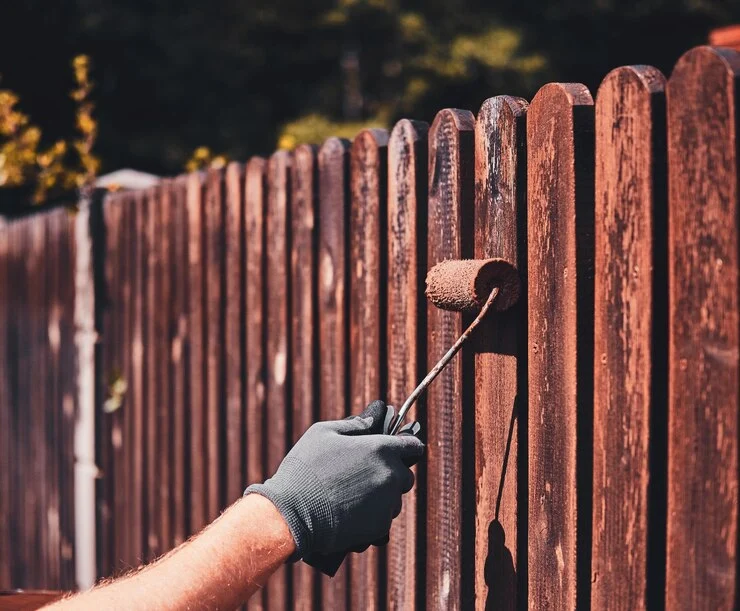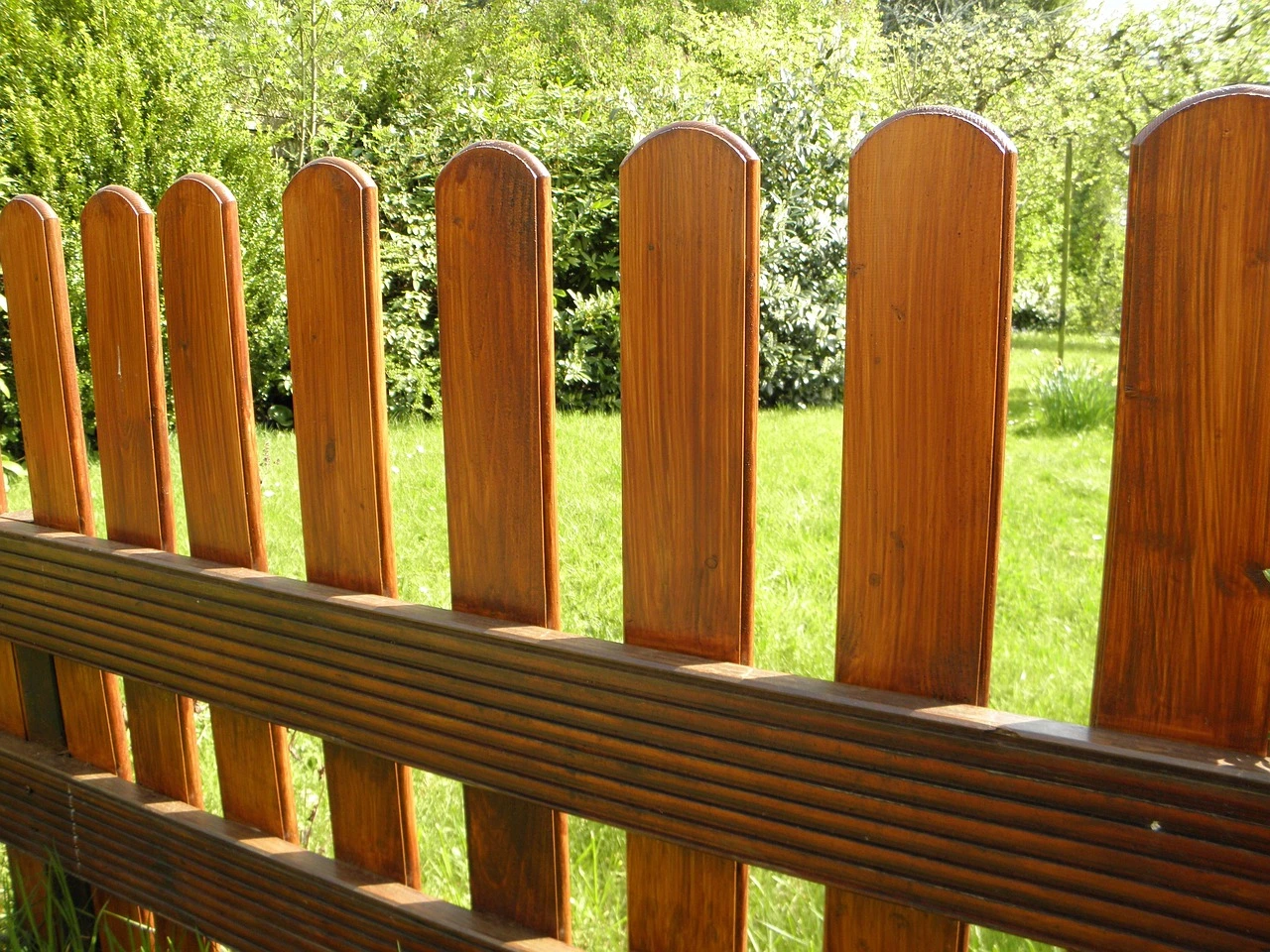Wooden porch fences add charm to your home. Over time, they may lose strength and beauty. Weather, pests, or neglect often cause this. Treating a damaged wood porch fence can save time and money. This post offers easy steps to restore your fence.
Why Do Wood Porch Fences Deteriorate?
Wood porch fences deteriorate over time due to a combination of environmental, biological, and mechanical factors. Knowing these causes can help you prevent and maintain them. Here are the main reasons:
Environmental Factors
- Moisture and Water Damage:
- Rain, snow, and humidity can seep into the wood, causing it to swell, warp, or rot. Prolonged exposure to standing water accelerates decay.
- UV Rays and Sunlight:
- Prolonged exposure to sunlight breaks down the wood’s fibers and causes it to fade, dry out, or crack over time.
- Temperature Fluctuations:
- Repeated cycles of freezing and thawing expand and contract the wood, leading to splits, cracks, or loosening joints.
Biological Factors
- Wood Rot:
- Caused by fungi that thrive in damp, untreated wood, leading to structural weakness and decay.
- Insects:
- Termites, carpenter ants, and wood-boring beetles can infest wood fences, eating through the material and compromising its integrity.
- Mold and Mildew:
- Moisture buildup can lead to surface mold or mildew, which not only affects the appearance but can also trap more moisture in the wood.
Mechanical and Physical Factors
- Wear and Tear:
- Everyday use, such as leaning against the fence or pulling on gates, can loosen fasteners or weaken joints over time.
- Impact Damage:
- Physical impacts, such as from lawn equipment, falling branches, or heavy winds, can crack or break wooden boards.
- Loose Fasteners:
- Nails, screws, or bolts may loosen due to vibrations, expansion, or corrosion, reducing the fence’s stability.
Poor Maintenance
- Lack of Protective Coatings:
- Without regular applications of paint, stain, or sealant, wood is more vulnerable to moisture, UV damage, and wear.
- Neglect:
- Failure to clean, inspect, and repair minor issues allows problems to escalate.
Substandard Materials or Construction
- Low-Quality Wood:
- Softer or less durable wood species, like pine, are more susceptible to damage than hardwoods like cedar or redwood.
- Improper Installation:
- Incorrect spacing, inadequate drainage, or poor fastening methods can accelerate deterioration.
By understanding these causes, you can take proactive measures like choosing durable materials, applying protective treatments, and maintaining your fence to slow or prevent deterioration.
Signs Your Wood Porch Fence Needs Attention
Your wood porch fence may show several signs indicating it needs repair, maintenance, or replacement. Regular inspections can help catch problems early and extend the life of your fence. Look out for these key signs:
- Warped or Split Wood: This indicates exposure to moisture and temperature changes.
- Discoloration: Faded or stained wood points to sun and water damage.
- Loose or Missing Boards: Structural weakness is a clear sign of neglect.
- Pest Damage: Holes, tunnels, or sawdust near the base of your fence signal an infestation.
Checking regularly can spot problems early and save on expensive repairs.
When to Take Action?
- Minor issues like peeling paint or loose fasteners can often be fixed with maintenance.
- Severe damage like widespread rot, structural instability, or significant insect infestation may require replacing parts or the entire fence.
Routine care, including cleaning, sealing, and inspections, can help address these issues promptly and prolong the life of your wood porch fence.

Fence Restoration and Maintenance Steps
Step 1: Assess the Extent of Damage
Before diving into repairs, inspect your fence thoroughly.
- Check Stability: Push against the fence to see if it wobbles.
- Inspect Each Board: Identify which planks need replacement versus those that can be salvaged.
- Look for Hidden Issues: Probe with a screwdriver to detect rot or termite damage.
Knowing the extent of the damage will help you determine whether repairs or a full replacement is necessary.
Step 2: Clean the Fence Thoroughly
Cleaning is an essential first step in any restoration process. Here’s how to do it:
- Remove Debris: Sweep away dirt, leaves, and cobwebs.
- Power Wash: Use a pressure washer to remove grime and mildew.
- Use a low-pressure setting to avoid damaging the wood.
- Apply a Cleaning Solution: Mix one part bleach with three parts water to kill mold and mildew.
- Scrub stubborn spots with a stiff-bristle brush.
Let the fence dry fully before moving to the next step.
Step 3: Repair or Replace Damaged Sections
After cleaning, focus on repairing the structural integrity of the fence.
For Minor Damage:
- Use Wood Filler: Patch small cracks and holes with an outdoor wood filler.
- Sand the Surface: Smooth out rough areas to prepare for staining or painting.
For Severe Damage:
- Replace Rotten Boards: Remove and replace sections that are beyond repair.
- Reinforce Loose Posts: Secure wobbly posts with concrete or metal brackets.
Proper repairs ensure your fence is safe and ready for long-term use.
Step 4: Protect Against Future Damage
Preventive measures are crucial for extending the life of your wood porch fence.
- Apply a Sealant: Protect the wood from moisture by applying a waterproof sealant.
- Use a brush or sprayer for even coverage.
- Stain or Paint: Add a layer of stain or paint to shield the wood from UV rays and weather.
- Choose a product with built-in water and UV protection.
- Install a Top Rail: Redirect water away from the boards by adding a protective top rail.
These steps will create a barrier against future damage, keeping your fence looking great for years.
Step 5: Regular Maintenance
Routine care is the best way to prevent problems from recurring. Here’s what to do:
- Inspect Annually: Check for loose boards, rot, and signs of pests.
- Clean Seasonally: Remove dirt and debris to prevent moisture buildup.
- Reapply Sealant: Refresh the sealant or paint every two to three years.
Consistent maintenance ensures your wood porch fence remains a functional and attractive feature of your home.
Common Mistakes to Avoid
When restoring a wood porch fence, it’s essential to avoid these common mistakes to ensure long-lasting results:
- Skipping the Cleaning Process: Applying treatments on a dirty or moldy fence reduces their effectiveness and traps grime underneath. Always clean the fence thoroughly before any repairs or sealing.
- Using the Wrong Products: Not all sealants, paints, or stains are created equal. Choose products specifically designed for outdoor wood to withstand weather and UV exposure.
- Ignoring Moisture Damage: Overlooking signs of rot or mold can lead to larger issues down the road. Address moisture-related problems immediately to prevent further deterioration.
- Neglecting Pest Control: Wood fences are susceptible to termites and other insects. Failing to use insect-repellent finishes or regular pest inspections can result in costly damage.
- Improper Repairs: Using the wrong tools or materials for fixes—such as indoor wood filler for outdoor use—can lead to repairs that don’t last. Always use weatherproof materials.
- Skipping Regular Maintenance: Even after restoration, neglecting maintenance will cause the fence to deteriorate again quickly. Set a schedule for cleaning, inspecting, and reapplying protective coatings.
- Overlooking Structural Stability: Focusing only on aesthetics and ignoring loose posts or wobbly sections can compromise the fence’s safety and longevity.
- Using Excessive Pressure During Cleaning: High-pressure washing can damage the wood fibers, leaving it vulnerable to more wear. Stick to a moderate setting to clean without causing harm.
Avoid these mistakes, and you’ll ensure your wood porch fence remains strong, attractive, and functional for years to come.
Conclusion
Restoring a losing wood porch fence may seem daunting, but with the right approach, it’s entirely manageable. Start by identifying the damage, clean and repair the structure, and protect it with sealants or paint. Learning how to treat losing wood porch fence will help you keep your fence strong and looking good for years.
By following these steps, you’ll not only save money but also enhance your home’s curb appeal. Take the time to care for your wood porch fence—it’s an investment that truly pays off.
Frequently Asked Questions
1. How to Fix a Loose Porch Railing?
To fix a loose porch railing:
- Tighten any loose screws or bolts.
- If the railing is wobbly, add brackets or braces for extra support.
- For posts that have loosened, secure them with concrete or replace damaged hardware.
- Ensure all connections are tight and aligned for a sturdy railing.
2. How to Treat an Outdoor Wood Fence?
Treating an outdoor wood fence involves:
- Cleaning it thoroughly to remove dirt and mold.
- Repairing or replacing damaged boards.
- Use a waterproof sealant to guard against moisture.
- Adding a UV-protective stain or paint to prevent sun damage.
Regular maintenance, such as seasonal cleaning and reapplying protective coatings, will extend the fence’s lifespan.
3. How Do You Restore a Wooden Porch?
To restore a wooden porch:
- Start by cleaning the surface with a power washer or scrub brush.
- Sand the wood to remove splinters, peeling paint, or old stains.
- Repair damaged boards or structural issues.
- Apply a high-quality stain or paint for protection and aesthetic appeal.
Use a sealant to shield against moisture and UV rays.
4. How to Fix Loose Deck Boards?
To fix loose deck boards:
- Inspect for loose screws or nails and tighten them.
- Replace nails with screws if they no longer hold securely.
- For warped or damaged boards, consider replacing them entirely.
- Use deck clips or brackets for added stability and to ensure proper spacing.
5. What Can We Do to Remedy an Ugly Fence and Deck on a Budget?
Budget-friendly ways to improve a fence and deck include:
- Cleaning: A thorough wash can dramatically improve appearance.
- Painting or Staining: Refresh with affordable outdoor paint or stain.
- Decorating: Add hanging planters, string lights, or lattice panels.
- Repairs: Fix minor damage yourself with basic tools and materials.
- DIY Upgrades: Replace hardware or add trims for a stylish look without spending much.
6. How Can I Maintain and Protect My Home’s Outdoor Wooden Structures?
Maintain and protect wooden fences, decks, and other structures by:
- Cleaning them regularly to prevent dirt buildup and mold growth.
- Applying sealants and stains every 2–3 years to guard against moisture and UV rays.
- Inspecting for damage, rot, or pests at least once a year.
- Repairing any loose or damaged boards immediately to prevent further issues.
- Using weather-resistant finishes to keep the wood durable and beautiful.
These practices will ensure your outdoor wooden structures remain safe, attractive, and functional.
